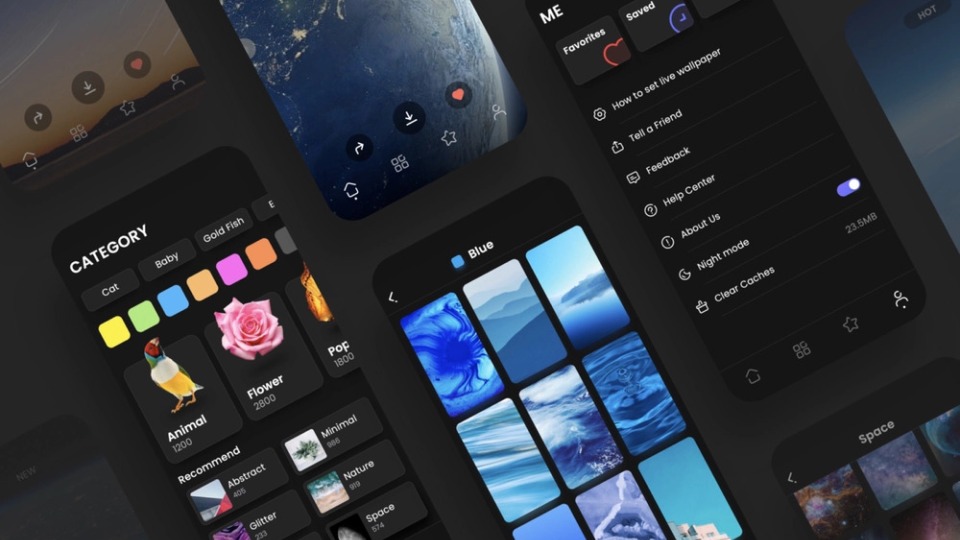MOBILE DEVELOPMENT
The Hybrid Revolution: One Codebase, Unlimited Reach

play_circle_outline
Listen to this article
Meet Vena & Ryan. Our AI-generated voices for River
In the ever-evolving world of mobile technology, a quiet revolution has been brewing. For years, native apps were the undisputed champions, praised for their unparalleled performance and seamless user experience. But a new contender has emerged, steadily gaining ground and often outperforming its traditional counterpart in the race for market dominance: hybrid apps.
So, what exactly are these hybrid apps, and why are they becoming the go-to choice? Let's dive in.
Native vs. Hybrid: A Quick Refresh
Before we explore the why, let's quickly recap the fundamental difference:
Native Apps: Imagine building a car specifically for left-hand drive roads and another entirely separate car for right-hand drive roads. That's native development. These apps are built specifically for a single platform (iOS or Android) using platform-specific programming languages (Swift/Objective-C for iOS, Java/Kotlin for Android). They offer direct access to all device features and typically deliver the highest performance.
Hybrid Apps: Now, imagine building a car that can effortlessly switch between left-hand and right-hand drive configurations. That's closer to hybrid. These apps are designed to run seamlessly across multiple operating systems, using compiled codebases like React Native and Flutter that offer near-native performance.
For a long time, the perception was that hybrid apps, while cost-effective, sacrificed performance and native feel. However, that narrative is rapidly changing.
The Hybrid Advantage: Why They're Pulling Ahead
The modern hybrid app has evolved significantly and are outpacing traditional native apps:
1. Code Once, Deploy Everywhere: The Ultimate Efficiency Play
Instead of developing separate codebases for iOS and Android, hybrid apps allow developers to write a single set of code that works across both. It's like writing a book and then being able to publish it in both English and Hindi without having to rewrite the entire story from scratch. That's the power of "write once, run anywhere". This translates to:
Faster Time-to-Market: One codebase means shorter development cycles and quicker app store launches, giving you a crucial competitive edge in fast-moving markets.
Reduced Development Costs: No need for separate teams or duplicated effort. Fewer developers, less code to maintain, and a streamlined process mean significant savings— a major boon for startups and large enterprises.
Simplified Maintenance and Updates: Fix bugs or add features once and roll them out universally, ensuring consistency and saving time.
2. Near-Native Performance: Closing the Gap
With advancements in powerful open-source frameworks like Flutter and React Native, hybrid apps can now deliver a remarkably smooth and responsive user experience that often rivals native performance. Through robust plugins and APIs, hybrid apps can seamlessly integrate with almost all native device functionalities like cameras, GPS, push notifications, accelerometers, biometrics, and more. This means you don't compromise on a rich feature set, giving users everything they expect from a modern app.
3. Developer-Friendly Ecosystems
The rapid adoption of hybrid apps has been heavily fueled by powerful, open-source frameworks backed by major tech giants— Flutter by Google and React Native by Meta. These frameworks offer extensive documentation, vibrant and supportive communities, and a wealth of pre-built components and libraries, all of which accelerate development and simplify troubleshooting.
4. The Business Imperative: Reaching a Wider Audience & Maximizing ROI
For businesses, hybrid development is a strategic win. By launching on iOS and Android from a single codebase, you instantly tap into a wider audience without doubling effort or cost— maximizing ROI.
Scaling becomes simpler and cheaper— updates, features, and iterations flow faster, keeping your app competitive. And with unified A/B testing and feedback cycles, businesses can respond quickly to user needs and market shifts.

Real-World Success Stories
Many of the apps you use every day are fantastic examples of successful hybrid development, showcasing its versatility and power. Gmail, Instagram, Twitter, Uber, Spotify— all proving that cross-platform solutions can deliver rich, responsive, and scalable user experiences across devices.
The Future is Hybrid
As technology continues to advance, the distinction between native and hybrid apps is likely to become even more blurred. With frameworks constantly improving, offering more native-like capabilities and performance, hybrid app development stands out as the clear winner in today's mobile landscape— where businesses can maximize their reach, optimize development costs, and accelerate their time-to-market without compromising on user experience.
The future of mobile apps is agile, efficient, accessible, and increasingly, hybrid. Get future-ready with Skraves.
👩🏻💻📱

We value your feedback and love to hear your thoughts and suggestions. If you have a moment, please leave us a review.
error_outline Error, please try again
check_circle_outline Done